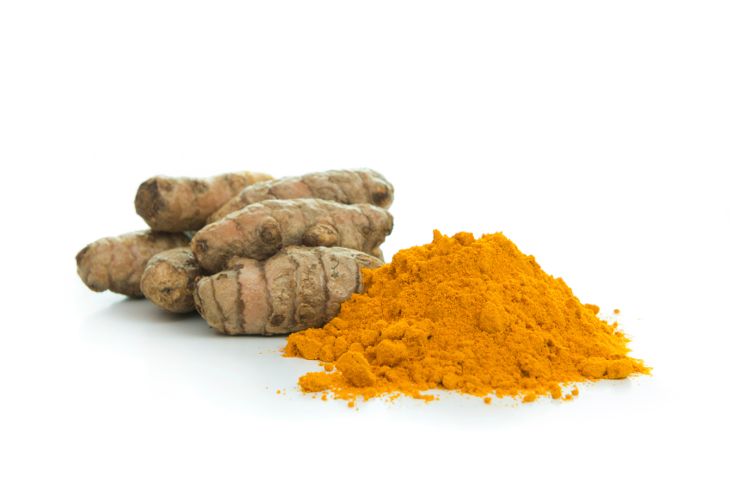Companies Debut New Highly Dispersible Curcumin Extract
Representatives from Gencor and Pharmako spoke with Nutritional Outlook at Natural Products Expo West about how HydroCurc can help manufacturers incorporate highly bioavailable curcumin with a minimal excipient load into capsules, beverages, or powders, and why the market for curcumin ingredients is only just beginning to heat up.
Photo © iStockphoto.com/Kenishirotie

At March’s Natural Products Expo West trade show, two companies, Gencor (Orlando, FL) and Pharmako Biotechnologies (Sydney), showcased a new, cold water–dispersible curcumin (Curcuma longa) extract ingredient, HydroCurc. HydroCurc is formulated using Pharmako’s proprietary LipiSperse technology, which the company said helps HydroCurc disperse evenly in a variety of applications, including cold beverages. Representatives from both companies spoke with Nutritional Outlook at the show about how this new technology can help manufacturers incorporate highly bioavailable curcumin with a minimal excipient load into capsules, beverages, or powders, and about how the market for curcumin ingredients is only just beginning to heat up.
In recent years, curcumin has become a botanical to beat. As curcumin’s star continues to rise, manufacturers are developing innovative new ways both to extract curcumin and to formulate it into an increasing range of applications. Eric Meppem, cofounder, commercial director, Pharmako, told Nutritional Outlook that HydroCurc, the new curcumin extract now being supplied by Gencor, stands out in an increasingly crowded category for a few key reasons. For one thing, he said, it is a “completely novel and innovative delivery system that no one else in the nutraceutical or dietary supplements industry is using.”
HydroCurc utilizes a dispersion technology developed by Pharmako called LipiSperse. Meppem said that the LipiSperse system allows HydroCurc to be dispersed, rather than solubilized, as many other forms of curcumin are. Because curcumin is fat-soluble, and not water-soluble, it is difficult to formulate into liquid applications. HydroCurc’s high dispersibility means that it can be more easily formulated into beverages, while other forms of curcumin tend to agglomerate in liquid applications, Meppem said.
And, because curcumin is fat-soluble, it is also notoriously difficult for the body to absorb. Chase Shyroc, vice president, sales and business development, Gencor, explained that LipiSperse provides a coating for the curcumin molecules that helps HydroCurc overcome absorption challenges. Explaining further, he said that curcumin molecules are hydrophobic, so, in a water environment, curcumin molecules bond with other fat-soluble particles, resulting in a bigger the molecule that is more difficult for the body to absorb. When the LipiSperse-coated curcumin molecules come into contact, however, they repel one another.
Added Meppem: “All the [curcumin] particles are separating [with the LipiSperse technology], not conglomerating, which is what gives [HydroCurc] the enhanced bioavailability. We’re making sure that we are maximizing the specific surface area [of the curcumin particles], which means that in the gastrointestinal tract the body can get to the nutrient [more easily].” According to Shyroc, a soon-to-be-published pharmacokinetic study showing HydroCurc’s enhanced bioavailability is currently in the peer-review stage.
The other major difference between HydroCurc and other bioavailable forms of curcumin, he claims, is that HydroCurc contains an excipient load of just 10% excipients, with 90% curcumin, while other bioavailable curcumin ingredients in the market comprise around 30% curcumin with 70% excipients. Shyroc added that this is important because “in an increasingly clean-label environment…where consumers want complete transparency and full disclosure on labels, 10% of excipients versus 70% of excipients is a big difference.”
And, while the LipiSperse technology allows HydroCurc to be more easily incorporated into beverage applications, Shyroc added that it can be incorporated into more traditional delivery formats like capsules, as well. And, said Meppem, while it can be difficult to formulate curcumin into an effervescent powder formula due to its agglomerative properties, HydroCurc is also well-suited for that delivery format. He added that HydroCurc has potential in the sports nutrition market in particular, including in combination with other ingredients like magnesium, which may help reduce muscle cramping post-exercise. In fact, he said, at least one customer is featuring HydroCurc along with collagen in a powder sachet for a recovery drink for athletes.
Certainly, innovation in the curcumin space has driven by skyrocketing consumer interest in curcumin for all its potential health benefits. And those health benefits have continued to expand as new research emerges about curcumin’s potential as an anti-inflammatory, as well as for its potential heart- and bone-health benefits, to name a few. Shyroc says that a PubMed search indicates that in 2008, there were roughly 400 studies published on curcumin. In 2017, however, that number increased to around 1,400. Added Meppem: “There are literally five studies published every day now on curcumin.” Gencor and Pharmako said they are also investing in the research behind HydroCurc, with three studies currently underway-one of which seeks to establish HydroCurc’s potential in attenuating delayed onset muscle soreness (DOMS) post-exercise.
And, not only has interest in curcumin increased from a research perspective, they said, but it has become a favorite among consumers, as well. In 2016, turmeric was the number one trending functional food searched for on Google. Meppem said that this is a trend that’s likely to continue as curcumin goes from specialty ingredient to household name.
“Every year when I come to America, I visit certain stores,” he said. “I can see what changes on the shelves…I’ve seen more curcumin and curcumin products in the specialty stores like Whole Foods, the Vitamin Shoppe, or GNC [in the past], but [familiarity with curcumin] hasn’t necessarily translated yet over to the mass market. It’s only just starting. So, I think in the U.S. the curcumin segment’s going to get bigger and bigger.”
Also read:
Turmeric: Trend, or Here to Stay?
2018 Ingredient Trends to Watch for Food, Drinks, and Dietary Supplements: Curcumin
Prinova acquires Aplinova to further increase its footprint in Latin America
April 7th 2025Prinova has recently announced the acquisition of Brazilian ingredients distributor Aplinova, which is a provider of specialty ingredients for a range of market segments that include food, beverage, supplements, and personal care.










